Interview with artist Dennis McCann
Dennis McCann is a lifelong Arkansan known for his technical skill in creating charming and relatable scenes in pastel. He has the ability to give the often unnoticed the recognition and “story” it deserves. His work has earned numerous awards and is highly collectable. Dennis is represented by Boswell Mourot Fine Art in Little Rock and Justus Fine Art Gallery in Hot Springs and more of his work can be seen at mccannfineart.com.
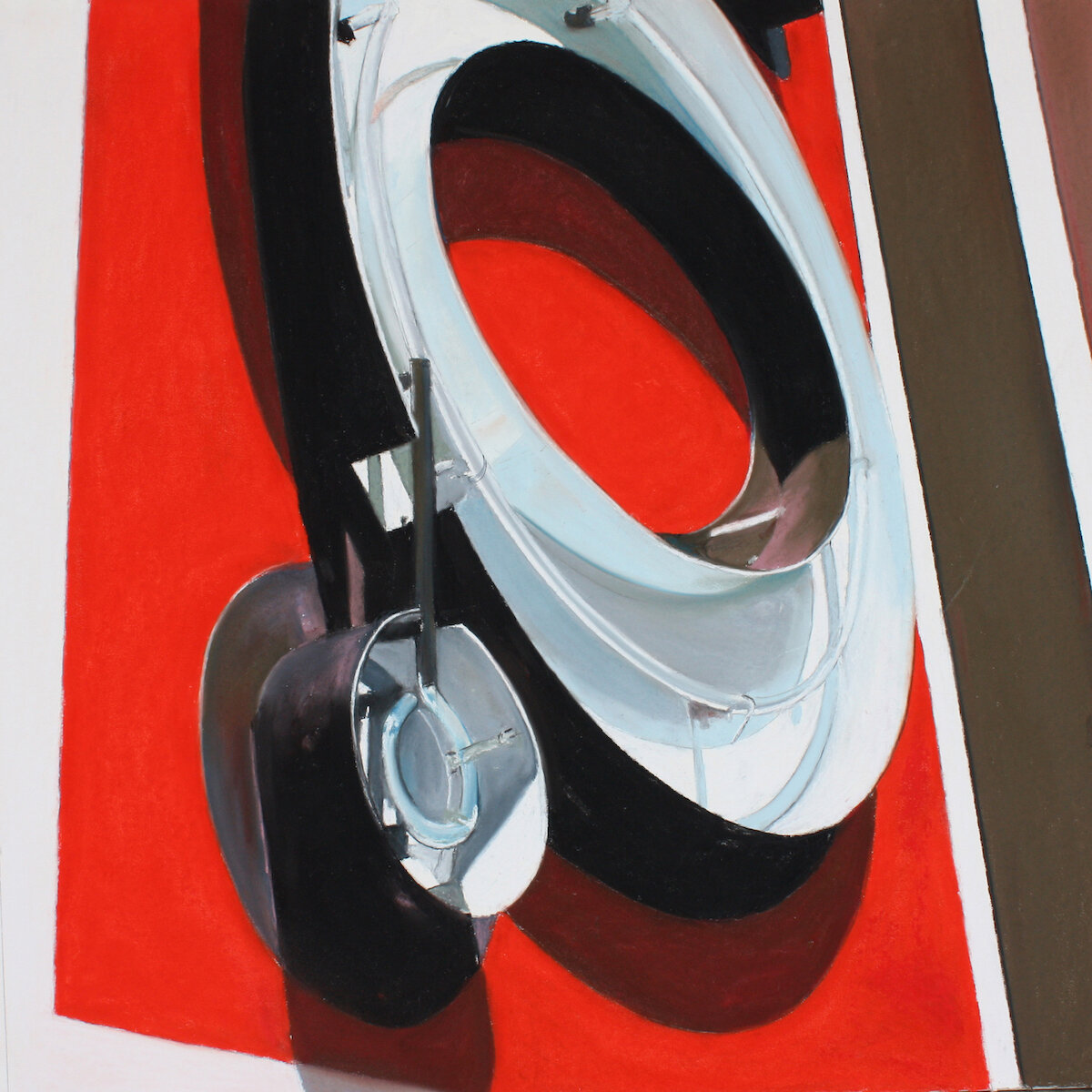
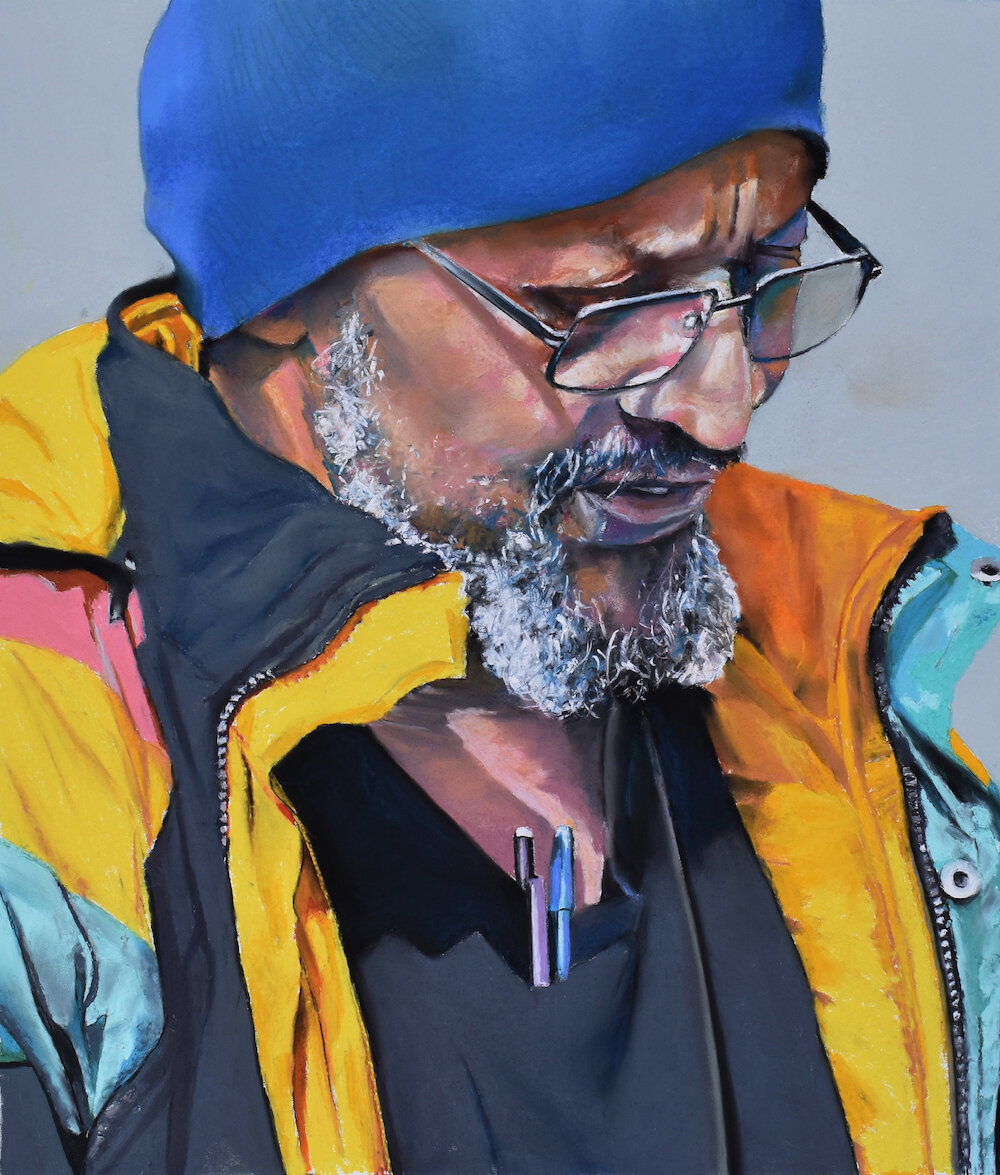

AAS: Dennis, you are a retired Firefighter?
DM: Yes, I was a Little Rock Firefighter for almost 32 years. I became interested in firefighting after talking to a friend who was a firefighter. I hired him to build a studio at my home and I became aware of his schedule of 24 hours on duty and 48 hours off. I realized that I needed a job like that. I was fortunate to get hired by the Little Rock Fire Department in 1983. This job was a perfect fit, as it afforded me the time to produce art and start a career as a firefighter. It was the best of both worlds. I retired from the fire department at the rank of Captain.
AAS: Tell me more about yourself. Your wife, Connie, mentioned that the two of you met at Arkansas State University then completed your degrees at the University of Arkansas Little Rock. Did you ever teach art as Connie did?
DM: I was born in Little Rock in 1952 and my formative years were spent in the Levy neighborhood of North Little Rock. After high school graduation in 1970, I moved to South Australia and lived with my brother. I lived there for one year and came home to start college at ASU and pursue an art degree. During my junior year, I met Connie, who was a freshman. We married in June of 1973 and transferred to UALR the following year. We had the opportunity to also study art history in Northern France in 1976 with other UALR art students.
No, I did not pursue teaching as a profession, even though I did complete a teaching degree. I have, however, had opportunities to teach drawing workshops. These include Arrowmont School of Art in Gatlinburg, TN, the Rockefeller Institute on Petit Jean Mountain, and other private workshops. Due to my having an education degree, I was offered the opportunity to develop the Public Education and Community Outreach Program for the Little Fire Department. For the last ten years with the LRFD, I was in charge of this program and taught fire safety in the public and private schools of Little Rock and many local community programs.
AAS: Your pastels are very recognizable, I think, because of your use of sunlight and high contrast. Have you always used pastels? What is it about that medium that allows your work to be so expressive yet so detailed? And I should say relaxing – that’s the feeling I get looking at Summer Breeze.
Summer Breeze, pastel, 30” x 30”
DM: My favorite medium is pastel. Although I enjoy oil painting, I like the immediacy provided by drawing with chalk. My technique of application is rather aggressive as I push the pastel into the paper to penetrate the surface. The end result is a detailed drawing with the qualities of an oil painting. Many people comment on how “clean” the drawings are because they understand that soft pastels are a difficult medium to use for small detail work and sharp lines.
Summer Breeze portrays the pleasures associated with summertime activities, such as riding a bike on a warm day or hanging a shirt on a lawn chair. Relaxation and activity on a summer day is the focus for this series of drawings.
“My technique of application is rather aggressive as I push the pastel into the paper to penetrate the surface. The end result is a detailed drawing with the qualities of an oil painting.”
AAS: Dennis, how do you define your style?
DM: My style is mostly categorized as Realism but with an expressive edge. My influences probably started with the realistic illustrations of Norman Rockwell. His works depicted the “common man” and everyday life. Then, in college, I was highly influenced by the work of my painting instructor, Al Allen. At that time, I also became aware of the works of Edward Hopper and his architectural paintings. They influenced my use of contrast and color in my own paintings. The works of Robert Cottingham also played a role in many of my artworks. His use of strong lighting on his street scenes, signs, and awnings caused me to look more closely at my surroundings. Although I work from my own photographs, these are mainly used for reference purposes. My drawings are not an attempt to produce “photo realism” but I do pay close attention to detail. My concern with proper proportion, perspective, and lighting are important but, I also like to simplify and alter some areas.
AAS: Marshal Square Row Houses and House with the Red Car are both currently in the 9th Annual National Juried Exhibition in Batesville. What makes you want to capture those scenes?
Marshall Square Row Houses, pastel, 30” x 40”
DM: My neighborhood scenes are my favorite subjects for many reasons. The simple architecture and strong sunlight create geometric shapes on the rooftops, walls, and windows. They compel me to draw and paint. Many of these houses are from my old neighborhood, such as the drawing, House with the Red Car. This house is only a block away from where I grew up in the late 1950’s. I gravitate to these types of images. The drawing, Marshall Square Row Houses also represents the post war architecture with an interest in roof designs, porches, and close proximity to their neighbors. I feel that these houses tell a story. I have been told by many people that “I can relate to these houses because I grew up in a house like it, or I visited my grandparents in a house like this. It brings back so many memories”.
House with the Red Car, pastel, 28” x 36”
Cotton Gin, pastel, 30” x 42”
AAS: Your rendering skill is really on display in Cotton Gin and Cotton Gin #2. They are large works with incredible detail. How difficult were they to create?
DM: Those are pieces from my “Industrial Series”. I enjoy the challenge of rendering the complexity of mechanical objects such as this cotton gin, cars, bicycles, and even neon signs. I am intrigued by the way things work with gears, chains, pulleys, and simple nuts and bolts. The drawings are another image of a forgotten past and engineering – the way things used to work. This structure included the additional interest of the rust and patina on the sheet metal, highlighted by the cast shadows. Cotton Gin won Best in Show in a national competition in Overland Park, Kansas in 2019. Connie and Jason also had works accepted in this exhibit.
Cotton Gin #2, pastel, 30” x 66”
AAS: I want to ask you next about your figure work. Some are very mysterious but very engaging. I especially love Working Class (a pastel) and Colored Step-Children (an oil). Are these done from old photographs?
Working Class, pastel, 37” x 42”
DM: Some of my figurative work uses old photos of my ancestors, and some are from photos that I have taken. The pastel drawing Working Class was from a photo of one of my family members. The image of this man, standing next to his truck, presents a hard-working man with his sleeves rolled up after a day of work. This is emblematic of a working-class member of our greatest generation. This piece, along with two of my neon sign drawings were included in the 59th Delta Exhibition in 2017. Interestingly, the Juror thought that the three pieces were done by two separate artists.
Colored Step-Children is a portrayal of my mother-in-law’s childhood, school, and her classmates. This black and white photo depicted life in rural Arkansas in the late 1930’s. I decided to colorize the image to include unusual skin tones and titled it Colored Step-Children as a reference to racism evident in the South. I did several similar pieces and called it my “colored people” series to indicate the absurdity of labeling black people “colored”. The current label now includes other races as “people of color”.
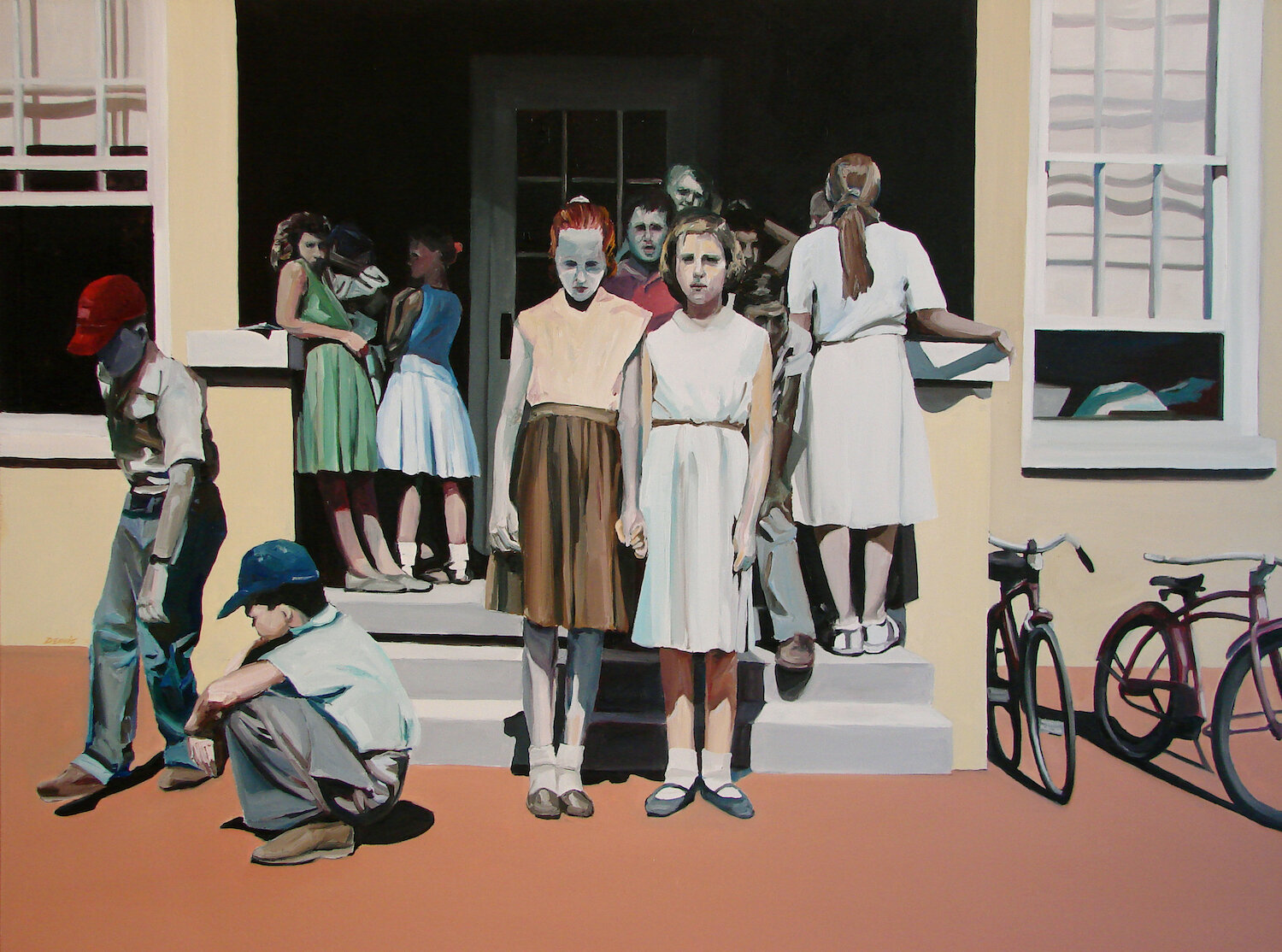
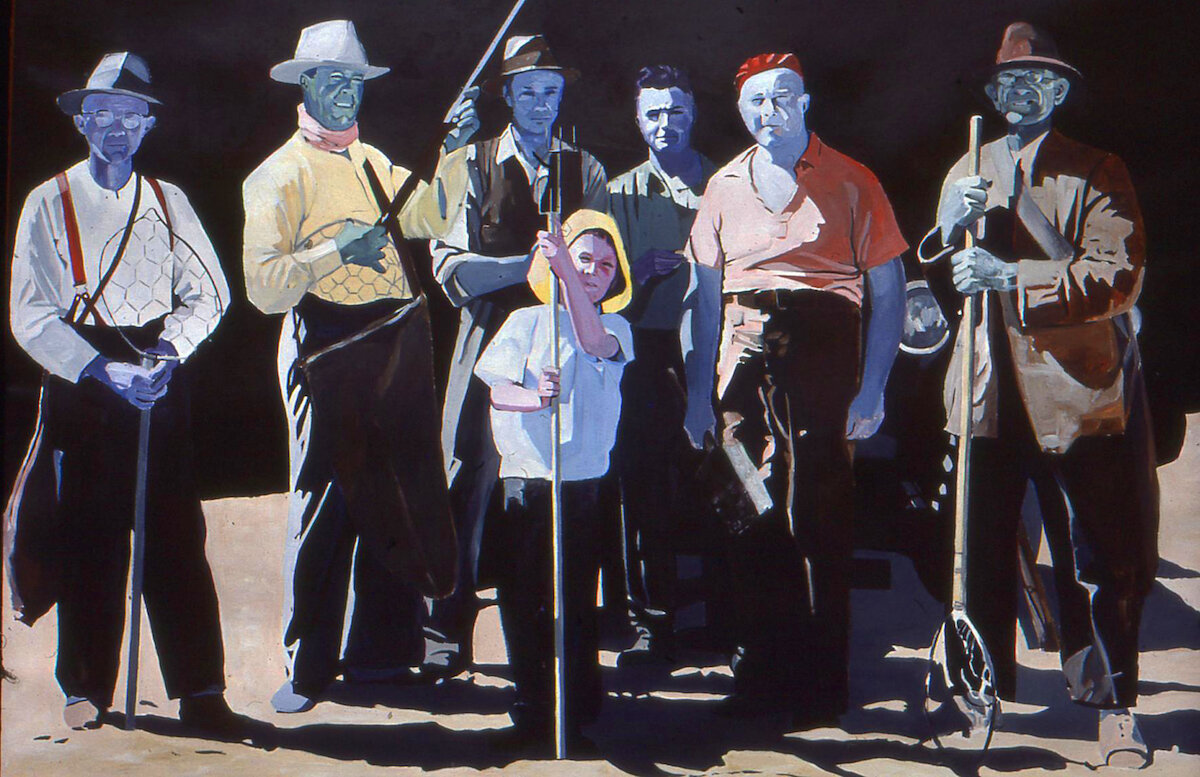
AAS: You recently created some amazing pieces in ink. Would you talk about those pieces and why ink? Is that something new for you?
DM: I have recently done some small drawings using colored ink as a medium on gray-toned paper. Since Connie and I love to camp, these drawings start as sketches to be completed at the campground with limited supplies. They provide an opportunity to use crosshatching and other drawing techniques that I used decades ago. These drawings are small and provide an opportunity to enter small works competitions like the Small Works International exhibit currently on display in Mena, Arkansas. This exhibit also features my drawing Bike Shadows.
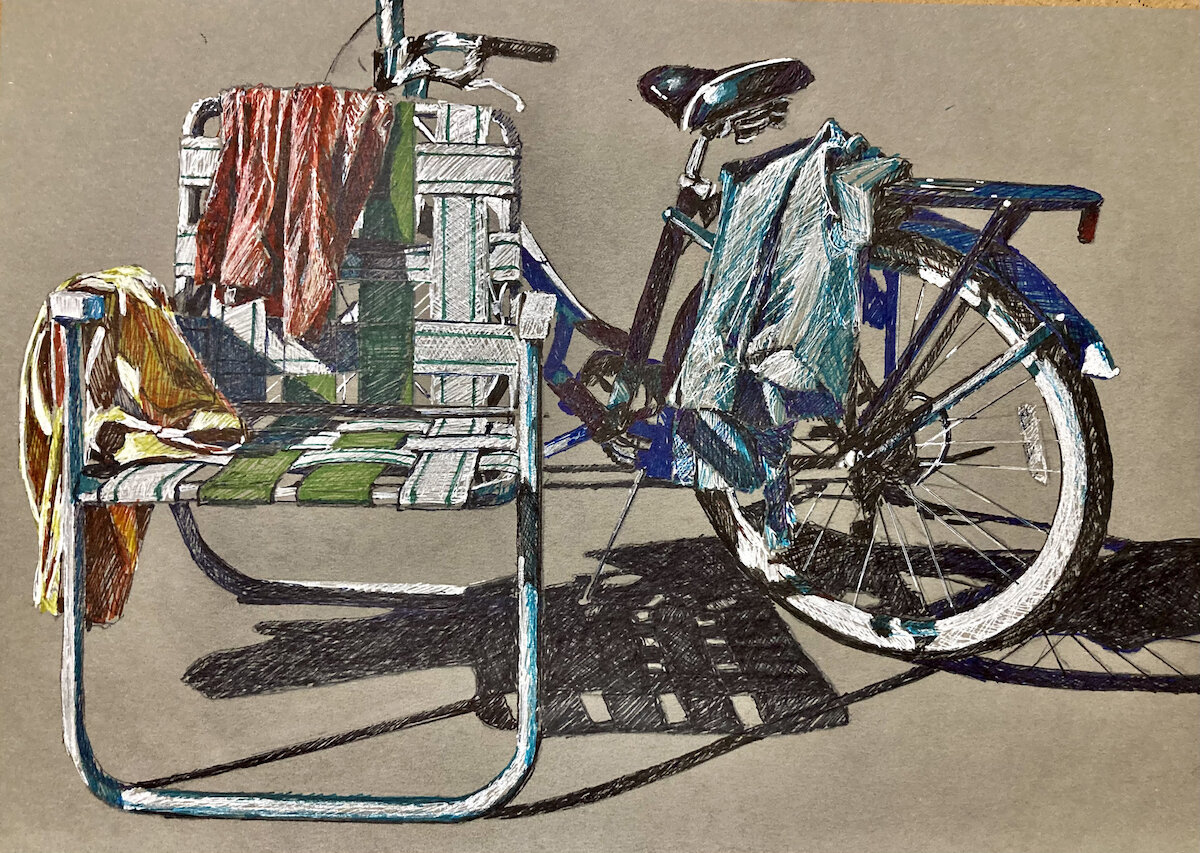

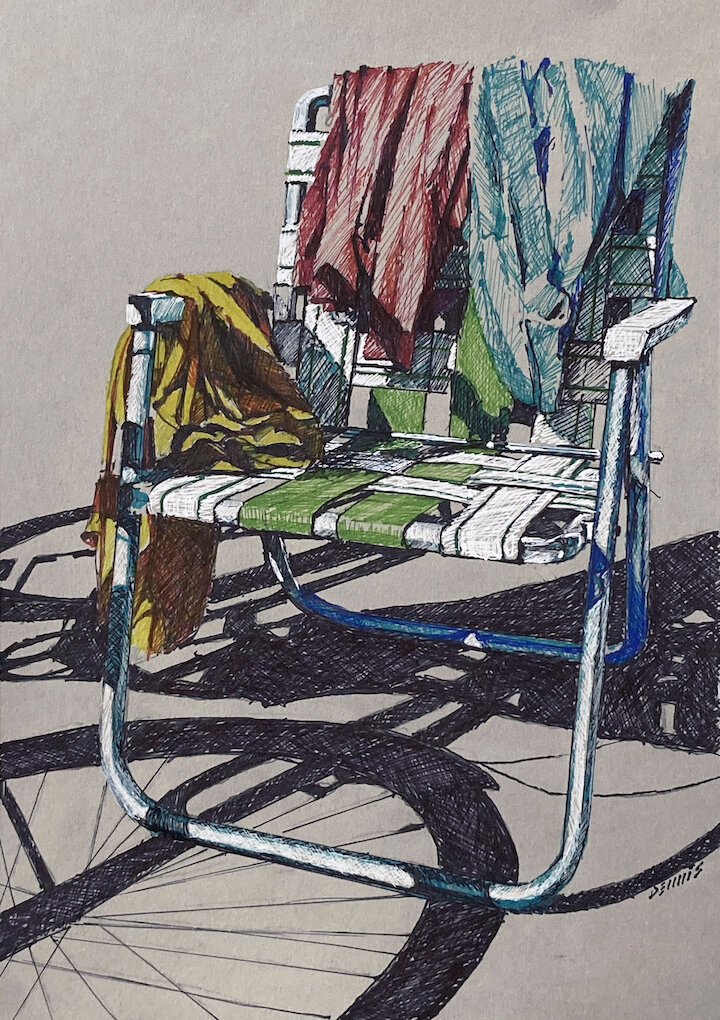
AAS: In all of your work, composition and your use of shadow bring interest to what might be considered somewhat mundane subject material. What is it about what you call ‘slice of life’ America that interests you and keeps you drawing it?
“As the pastels crumble and the dust falls, I am in my happy place.”
DM: I prefer to work in a controlled studio environment using photos that I have taken. My compositions are dependent on a portrayal of the simple things in American life. That includes riding a bicycle, relaxing in a lawn chair, or highlighting a neighborhood with sunlight and shadows. Some objects, such as neon signs and metal awnings, are often overlooked as relics of bygone days. I am attracted by these objects and attempt to preserve the beauty often overlooked in such common place objects. Shadows are a huge element of my compositions. Connie and I often get out to photograph landscapes, street scenes, and other objects to provide compositions for our art. We hopefully get strong sunlight to enhance the shadows and contrast. In the studio, I pin large paper to the wall and play rock music like Led Zeppelin to energize my approach and intensity. As the pastels crumble and the dust falls, I am in my happy place.
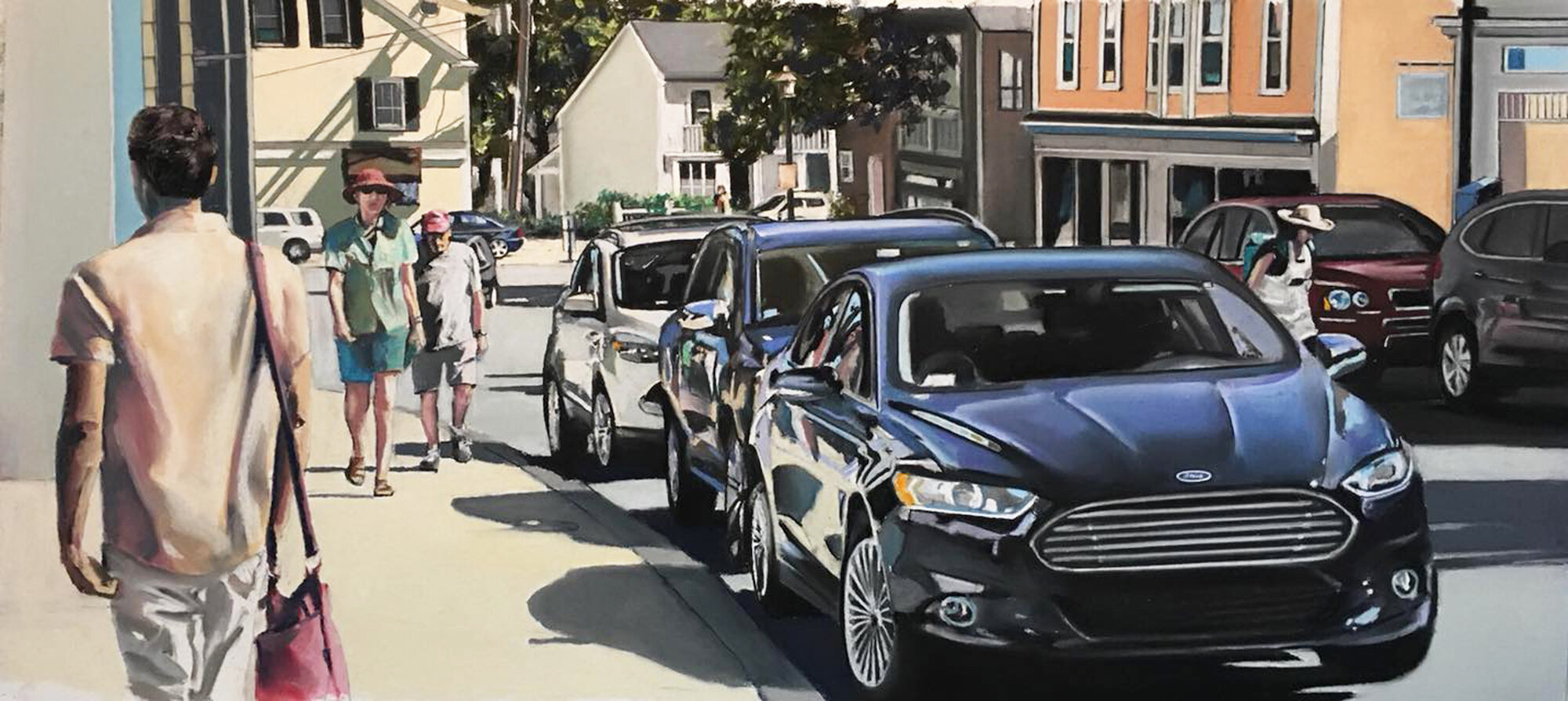

AAS: Dennis, it must be a lot of fun, and gratifying for you and Connie to be in shows with your son Jason. What is the feeling like when you see all of the McCann work hanging together?
DM: It is great that we have a shared interest in art on a professional level. We encourage and critique each other often. Building frames together, sharing supplies, and sharing information about upcoming shows is typical for us. It is always an honor to be included in any competitive juried exhibition and it is encouraging to have our work hang together in these shows. We, of course, tease each other when one wins an award or gets accepted, and the others don’t. Jason and I have had works exhibited together in many shows over the year. We had a two person show together at the Pine Bluff Arts Center and gave a gallery talk together. I have been included in the Delta Exhibition 14 times and several of those years, Jason and I were both accepted. We have also had works hung together in The Reflections in Pastel exhibit at the Arkansas Studies Institute in Little Rock, the Fort Smith Regional Art Museum, and a national show in Overland Park, Kansas. A few years ago, we had a family show at Boswell Mourot Fine Art titled “A Family Affair” and are currently scheduled to have our work featured there again from June 25 – July 10. It is gratifying to share this passion for producing art within our family.


